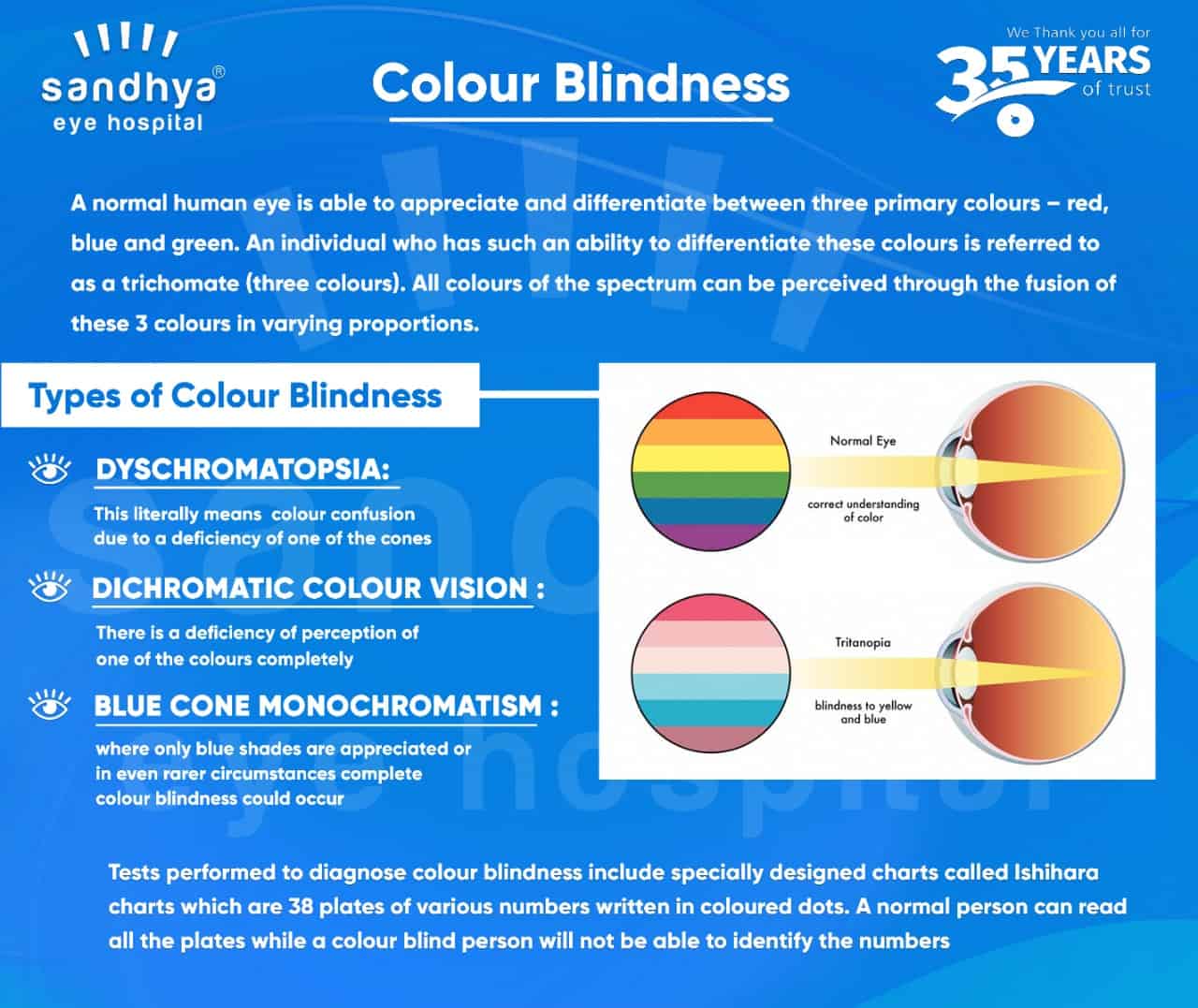A normal human eye is able to appreciate and differentiate between three primary colours – red, blue and green. An individual who has such an ability to differentiate these colours is referred to as a trichomate (three colours). All colours of the spectrum can be perceived through the fusion of these 3 colours in varying proportions. Such a phenomenon is possible because our eyes contain a type of cell called cones at the back of the eye in a region called retina. Cones are cells which aide us in color vision and vision in well-lit conditions. There are three types of cones for this very purpose: red sensitive, blue sensitive and green sensitive. People who have abnormal amounts or quality of any of these cones are said to be color blind.
Contrary to popular belief, colour blind people are able to see colours, they just have trouble mainly in differentiating the colours when placed next to each other. Most cases of colour blindness is due to genetics and are hereditary. Males are ten times as likely to be colour blind as females.

Types of colour blindness include
- Dyschromatopsia: This literally means colour confusion due to a deficiency of one of the cones. It can be of 3 types depending on which colour perception causes confusion in the brain.
- Dichromatic colour vision: In this condition there is a deficiency of perception of one of the colours completely. This again can be of three types depending on the colour. Red deficiency in this is the most common type of colour blindness and causes red-green blindness. Such an occurrence comes with danger as certain occupations require the person to differentiate these two specific colours, like sailors, drivers and traffic police.
- In rare instances there could be a condition called blue cone monochromatism where only blue shades are appreciated or in even rarer circumstances complete colour blindness could occur due to lack of all 3 types of cones.
Types of colour blindness include
- Dyschromatopsia: This literally means colour confusion due to a deficiency of one of the cones. It can be of 3 types depending on which colour perception causes confusion in the brain.
- Dichromatic colour vision: In this condition there is a deficiency of perception of one of the colours completely. This again can be of three types depending on the colour. Red deficiency in this is the most common type of colour blindness and causes red-green blindness. Such an occurrence comes with danger as certain occupations require the person to differentiate these two specific colours, like sailors, drivers and traffic police.
- In rare instances there could be a condition called blue cone monochromatism where only blue shades are appreciated or in even rarer circumstances complete colour blindness could occur due to lack of all 3 types of cones.
If you have good colour perception throughout life and suddenly or gradually start noticing that you are finding it difficult to differentiate colours you should immediately consult your ophthalmologist as any of the above conditions could be present and early detection and treatment can make a huge difference.
Tests performed to diagnose colour blindness include specially designed charts called Ishihara charts which are 38 plates of various numbers written in coloured dots. A normal person can read all the plates while a colour blind person will not be able to identify the numbers.
Treatment for hereditary colour blindness unfortunately does not exist but recent advances have shown positive treatment options in the form of lenses which filter colour specifically based on your disability. Contact your doctor to check whether that option is best for you.

